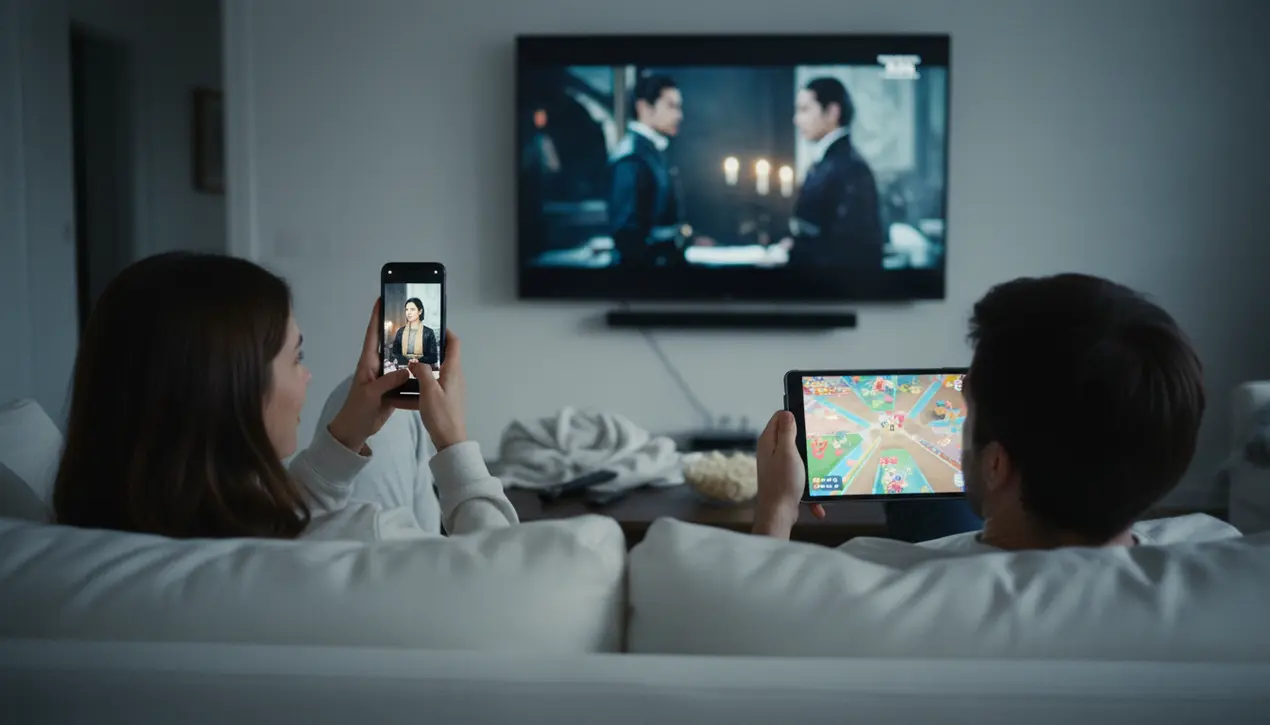- News
- culture-trends
- The Scroll Wars: How TikTok and the Battle for Attention Are Forcing a TV Revolution

Entertainmentculture & trends
The Scroll Wars: How TikTok and the Battle for Attention Are Forcing a TV Revolution
JE
Jessica Stone
3 hours ago7 min read
The age of appointment television, where viewers devoted their full attention to a single screen, is colliding with the era of the endless scroll. Hollywood is in a state of upheaval, fundamentally retooling its approach to storytelling to capture the attention of a new, distracted audience.The primary adversary? The hypnotic, algorithmically-perfected feed of TikTok. This is not a minor trend but a seismic shift actively dictating the television being greenlit and produced today.The industry's most direct response is the vertical micro-drama—a frantic attempt to fight fire with fire. These are not traditional shows but hyper-condensed narratives filmed for a phone screen, with episodes as brief as 45 seconds.Their goal is to deliver an entire plot twist before a viewer's thumb can instinctively switch apps. It's a high-stakes gamble, attracting savvy investors from Kris Jenner to corporate titans like Disney, all betting that the future of television lies in becoming the scroll itself.The influence of splintered attention spans cuts even deeper than new formats. A report from n+1 revealed that Netflix executives have advised screenwriters to have characters explicitly state their actions and intentions, a directive aimed at viewers who treat shows as background ambiance rather than a primary focus.The instinctive reaction is to lament the deliberate dumbing-down of entertainment, a feeling that is entirely valid. It seems a stark departure from the artistic renaissance of television's so-called golden age.However, the industry's perspective, as detailed by analysts like Puck News’s Julia Alexander, is less about artistic malice and more about corporate survival. Executives are not scheming to create inferior content; they are staring at data dashboards that illustrate a brutal war for every second of a viewer's day.The competition is no longer just other streaming services; it's a YouTube video, an Instagram Reel, or a buzzing group chat. This is the 'second screen problem' amplified to an extreme, where the distraction is a direct competitor offering infinite, instant gratification.The consequence is a deluge of what audiences might call 'slop'—a surge of easily digestible, formulaic content designed for passive consumption, from predictable holiday rom-coms to assembly-line action films. This is less a conscious effort to lower standards and more an inevitable outcome of the mandate to produce overwhelming volume for platform bottomless pits.Yet, within this landscape of fractured focus, a counter-narrative of cautious optimism is emerging. The theory posits that we are approaching a breaking point in the 'infinite content' era.As the volume of mediocre material becomes overwhelming, truly high-quality storytelling will re-emerge as a scarce and valuable commodity. Audiences who crave beautifully crafted scenes and clever dialogue will actively seek it out and be willing to pay a premium.This could lead to a future where a service like Netflix or Apple TV+ pivots to a boutique model—costing significantly more per month but offering a curated sanctuary of prestige art, free from the algorithmic noise. Such a shift would inevitably mean a smaller, more concentrated industry, but it would also re-establish a clear market for artistic television.So, while the immediate future may feel like a descent into a content cacophony, the human desire for a powerful, immersive story—the kind that makes a viewer forget their phone exists—is not going extinct. The business models may fracture and reconfigure, but the magic of a breathtaking show will always find its audience, even if we have to wade through a sea of noise to reach it.
#TikTok
#micro-dramas
#streaming
#attention economy
#featured
Stay Informed. Act Smarter.
Get weekly highlights, major headlines, and expert insights — then put your knowledge to work in our live prediction markets.
Comments
Loading comments...
© 2025 Outpoll Service LTD. All rights reserved.